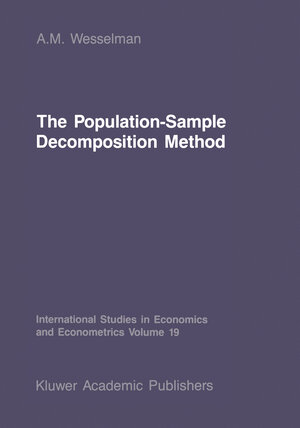
×
![Buchcover ISBN 9789400936799]()
The Population-Sample Decomposition Method
A Distribution-Free Estimation Technique for Minimum Distance Parameters
von A.M. WesselmanInhaltsverzeichnis
- I. Introduction to the Population-Sample Decomposition Approach.
- I.1 The linear statistical model.
- I.2 Minimum distance parameters subject to minimal model assumptions.
- II. The Estimation of Linear Relations; The Sample Part of PSD.
- II.1 Method of moments and asymptotic distribution theory.
- II.2 Asymptotic estimation of covariance functions.
- III. Principal Relations.
- III.1 Basic formulation of the principal relations.
- III.2 The distance matrix Q.
- III.3 Simultaneous equations systems.
- III.4 Seemingly unrelated regressions.
- III.5 Restricted seemingly unrelated regressions.
- III.6 Canonical correlation analysis.
- IV. Principal Factors.
- IV.1 Basic formulation of principal factors.
- IV.2 Principal relations versus principal factors.
- IV. 3 Principal components analysis.
- V. Goodness-of-Fit Measures.
- V. 1 Coefficients of multiple correlation and angles between random vectors.
- V.2 Coefficients of linear association for principal relations and principal factors.
- V.3 Coefficients of linear association for simultaneous equations systems.
- V.4 Coefficients of linear association for seemingly unrelated regressions.
- VI. Review.
- VI.1 A schematic representation of the parameters.
- VI.2 List of notation and summary of results.
- VII. Computational Aspects of the Population-Sample Decomposition.
- VII.1 Fourth-order central moments.
- VII.2 Pre- and post-multiplication of V by the gradient matrix.
- VII.3 The PSD method in practice.
- Preliminaries on matrix algebra.
- References.
- Author Index.



